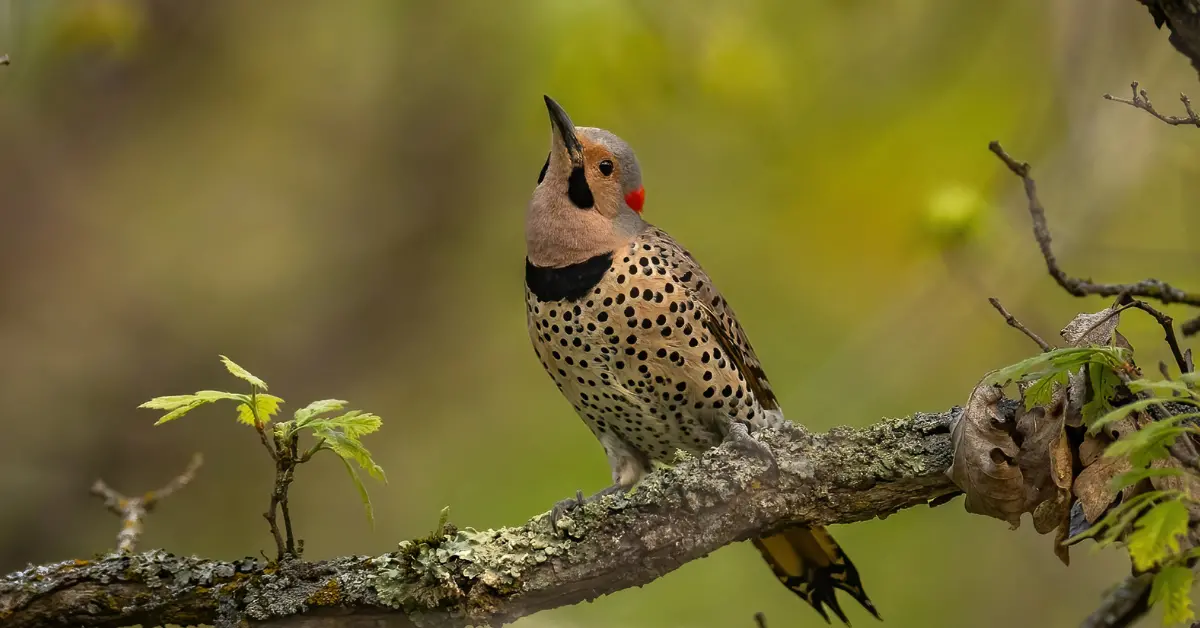The Northern Flicker is one of North America’s most familiar and charismatic woodpeckers.
They stand out amongst other members of the woodpecker family; not because of startlingly different colors or patterns, but because of their unique ground-foraging behaviors.
If startled, they show a sudden flash of bright colour as they take to the sky.
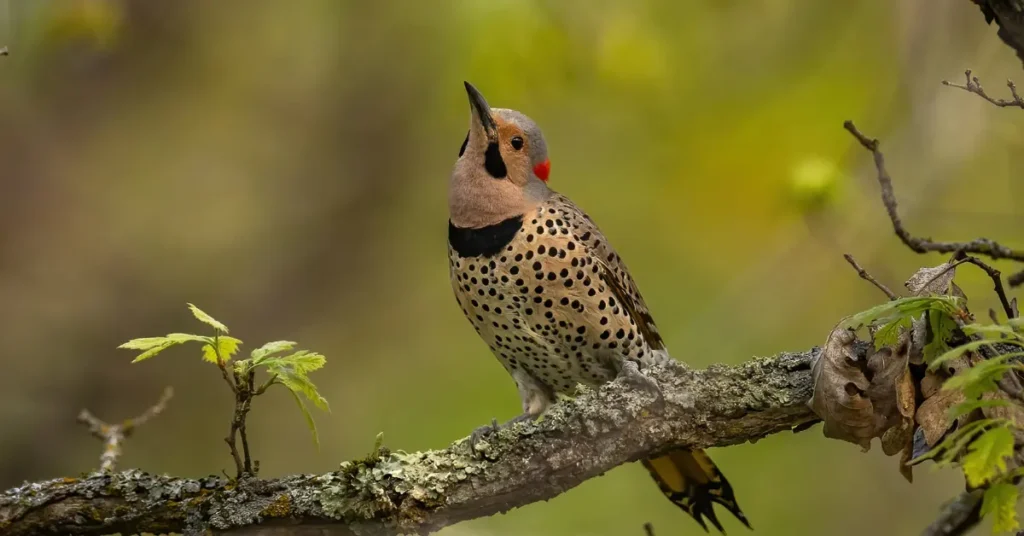
This article aims to explore the Northern Flicker’s distinctive behaviors and calls. We’ll also be looking at how you can ID them, as well as discovering some interesting facts along the way.
Keep reading to find out more about the Northern Flicker.
What is the Northern Flicker?
But first, what is the Northern Flicker? Afterall, the name doesn’t give much away.
Northern Flickers belong to the woodpecker family. However, unlike many other woodpeckers, the Northern Flicker primarily forages insects on the ground.
There are two subspecies; yellow-shafted and red-shafted.
Geographical Distribution of Northern Flickers
Northern Flickers are relatively common across much of North America. They have one of the largest ranges of all North American woodpeckers.
The Northern Flicker breeds across temperate North America – from Alaska and much of Canada, through the United States, and into parts of Central America and the Caribbean.
Many populations are resident year-round. However, some populations, especially those in the northern range, migrate south for winter.
Within this large range, Northern Flickers are not too fussy about their preferred habitat.
You’ll likely spot Northern Flickers around areas of open woodlands, parks, and forest edges. They may frequent backyards, orchards and farms.
In fact, they’re very adaptable. Where there are habitats that combine trees for nesting and open ground for foraging, there’ll often be Northern Flickers.
Identification
The Northern Flicker is a handsome bird.
They are fairly large woodpeckers with a slim, rounded head, slightly downcurved bill, and long, flared tail that tapers to a point.
At first glance, it seems near impossible not only to distinguish a Northern Flicker from other species, such as the Gilded Flicker, but also between the two sexes.
However, there are some telltale signs to look out for to help you ID the Northern Flicker.
Male
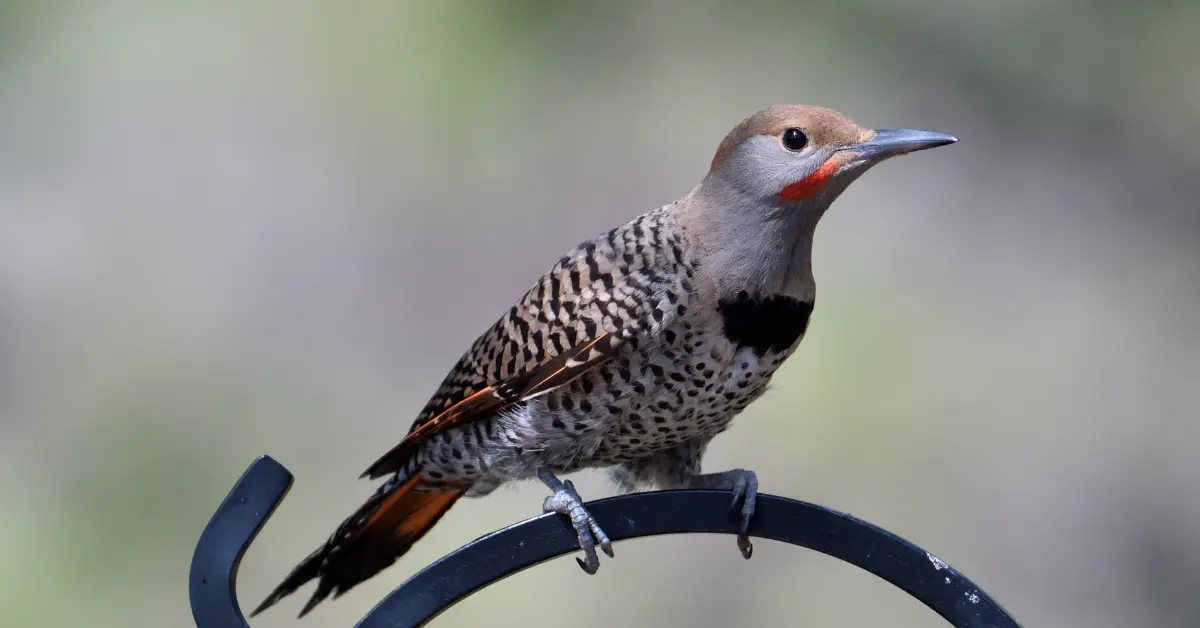
Like some humans, males can be distinguished from females by the presence of a mustache.
Okay, okay, it’s not really a mustache. In biology, ornithologists prefer the term “malar stripe”, which is a dark stripe extending from the beak downwards.
For eastern, yellow-shafted birds that stripe is typically black. For many western, red-shafted birds the stripe is red.
Besides the differing mustache colors, males generally follow a similar pattern: a brown, barred back, spotted belly, a crescent-shaped black patch on the upper breast, and a white rump patch that is conspicuous in flight.
While the combination of the barred upperparts and spotted underparts is common to both subspecies, the crown and face tones vary slightly.
Yellow-shafted Northern Flickers have ruddy facial plumage with a grey crown. Red-shafted individuals are grey across much of their head, with some ruddy plumage around their eyes.
Female
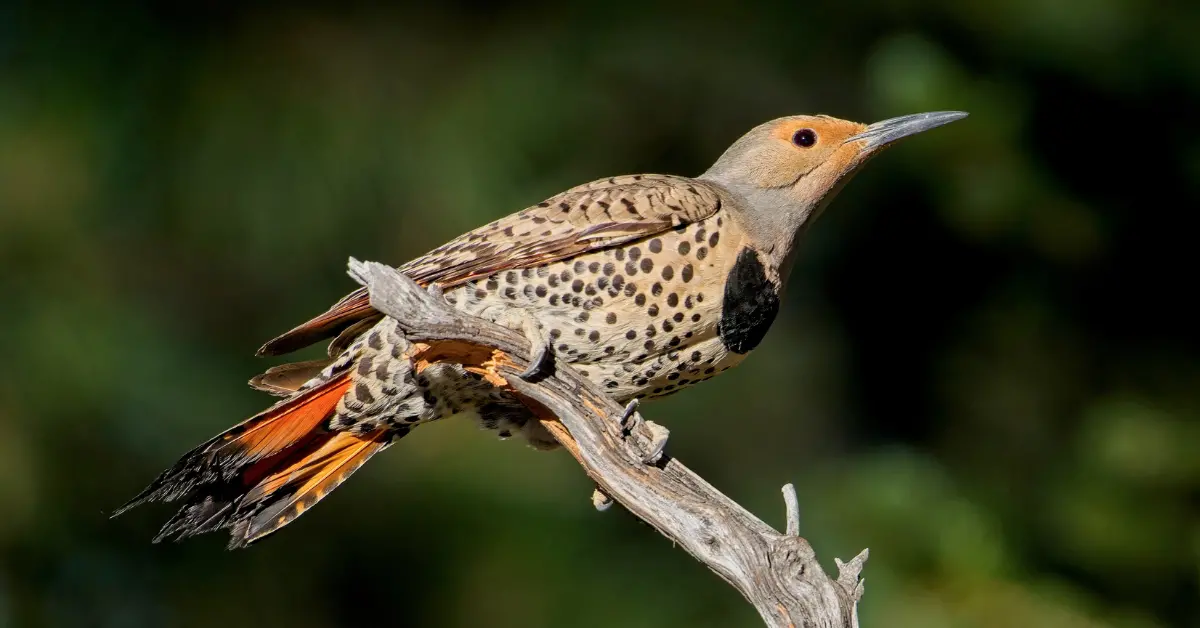
Female Northern Flickers resemble males in overall patterning.
They exhibit the same barred back, spotted belly and bright flight-feather shafts, which they conspicuously show in flight.
However, they lack the distinct malar stripe – making this one of key distinguishing points between the two sexes.
Juvenile
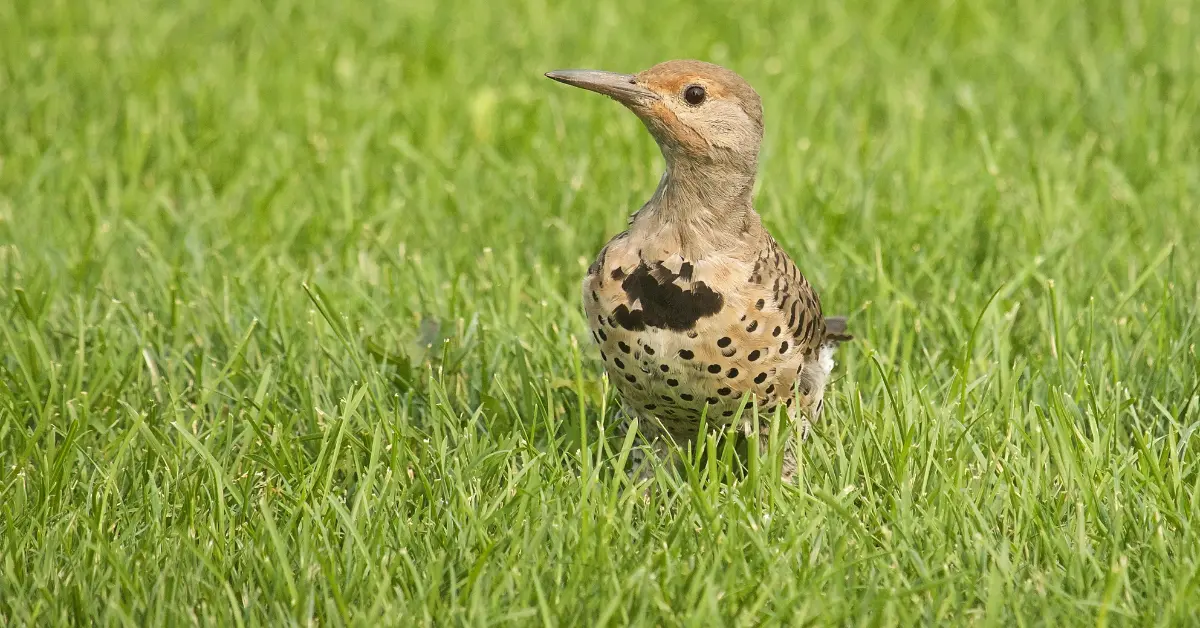
Juvenile Northern Flickers look like muted versions of adults.
Young birds display less-contrasting barring and spotting, a fuzzier appearance around the head and body, and overall duller coloration.
The black breast crescent and belly spots are present but often softer and less distinct, and the shaft color is visible but not as bright as in adults.
As juveniles age through their first moult, their patterns become more defined and they develop the brighter shaft flashes of mature birds.
Subspecies
Most ornithologists recognize two subspecies of the Northern Flicker: the Yellow-shafted and Red-shafted.
The “Yellow-shafted” Northern Flicker is found throughout eastern U.S. to Texas and the Great Plains and extends across the boreal forest of Canada to central Alaska.
The “Red-shafted” group ranges across western North America from southern Alaska down to Mexico and Central America.
While both subpopulations look similar, there is one key difference: the color of flight-feather shafts. One group is yellow, the other is a rosy red.
Difference Between Northern Flicker and Gilded Flicker
Like the Northern Flicker, Gilded Flickers forage on the ground.
However, they are only found in the Sonoran Desert, restricting them to southwestern Arizona and southeastern California.
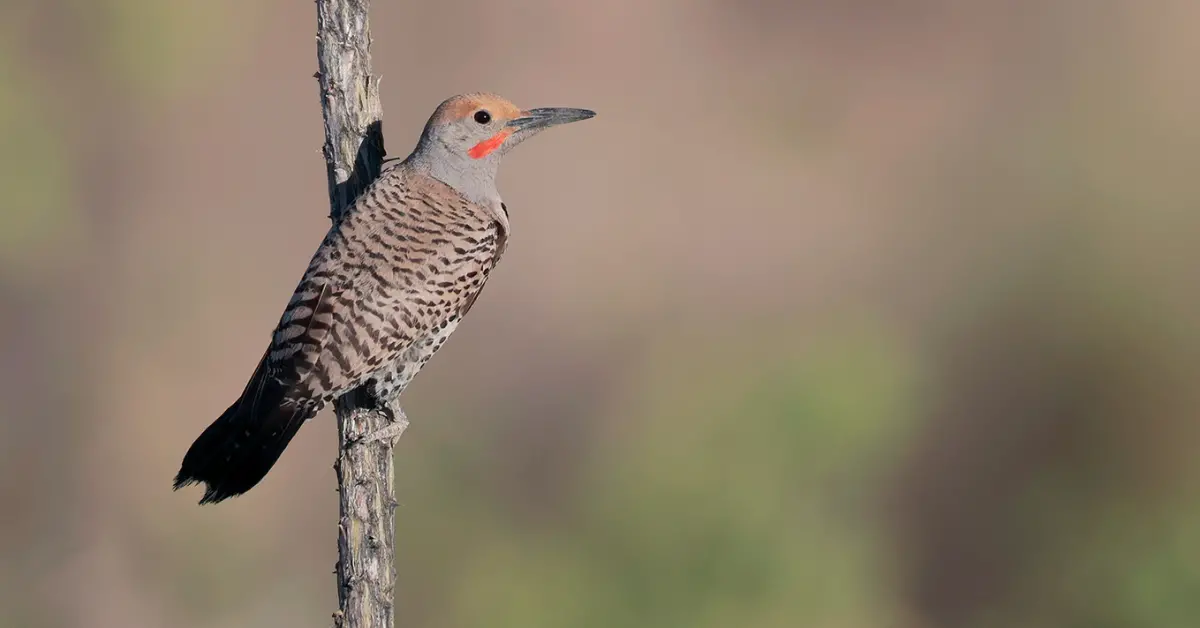
Here, red-shafted Northern Flickers and Gilded Flickers live at similar elevations.
So, how can you tell the two species apart?
Gilded Flickers of southern Arizona have yellow under the wings and tail. Northern Flickers in this range have red under the wings and tail.
Gilded Flickers also have more brown on the crown and nape. Northern Flickers are more gray.
For females, Gilded Flickers have more extensive brown on the crown and nape than female Northern Flickers.
You can also look at their nesting behaviors: Gilded Flickers rely almost exclusively on giant cactus for nesting.
Songs and Calls
While they are not songbirds, Northern Flickers have a large repertoire of songs and calls.
Just a quick reminder: songs are long, complex, and often learned vocalizations used by males. Calls, on the other hand, are a vocalization of short duration that is simple in its structure.
Song:
- A long, rolling rattle, over a period of up to 8 seconds, that rises and falls in intensity
- Sung mostly throughout spring and early summer – when males are trying to establish territories and mate.
Click on the play button below to hear the song of the Northern Flicker:
Call:
- Rapid, single note call, lasting less than a second, that sounds like “kyeer“.
Click on the play button below to hear the call of the Northern Flicker:
Drumming:
Like other woodpecker species, both male and female Northern Flickers drum on trees and metal objects as a way of communicating with one another.
For this form of vocalization, expect to hear loud, rapid and evenly spaced hammering. You may even observe the bird pause, move, then continue with a different melody.
As woodpeckers cannot sing per se, this form of drumming is equivalent to singing in passerine songbirds.
Diet of the Northern Flicker
Northern Flickers are unusual among woodpeckers.
Unlike many other woodpecker species, which typically drill holes in trees to feed off bugs or sap, Flickers mostly forage on the ground.
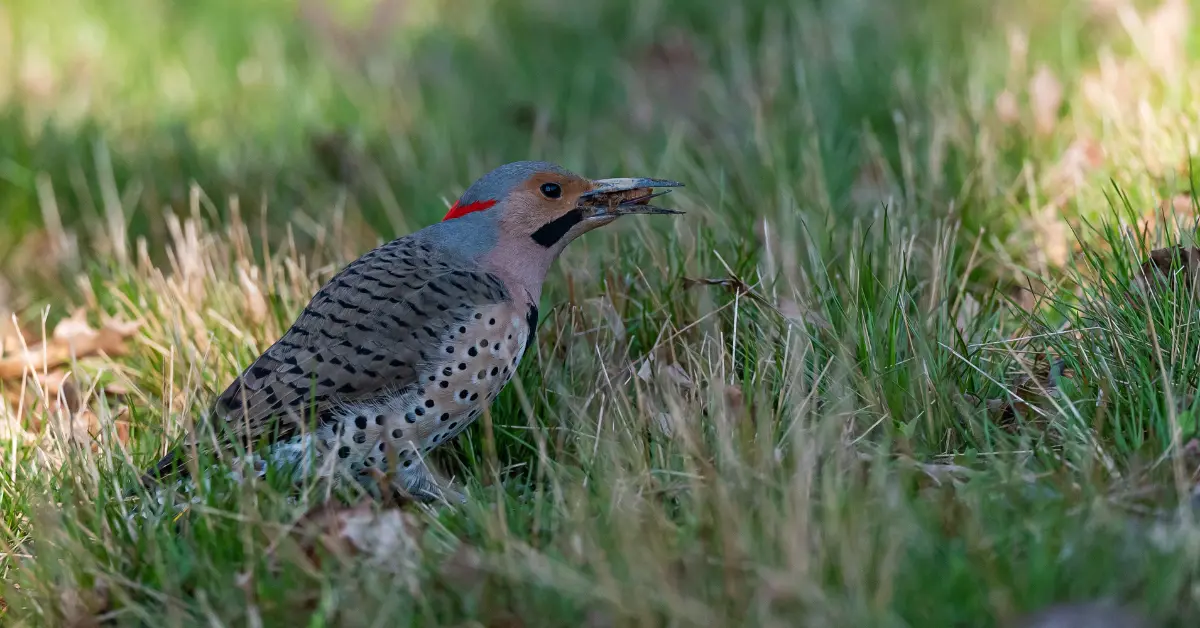
It isn’t uncommon to see them probing and digging for ants and beetle larvae on the ground. You may spot Flickers hammering at the ground the same way other woodpeckers would hammer at a tree.
However, they’re not fussy where these insects come from.
A bit of decaying wood here. A dried up cowpat there.
No, really. Northern Flickers have been observed breaking open dried up cow poop to get the nutritious insect larvae buried within.
Northern Flickers have a specially adapted flattened tongue tip to help snare prey.
While insects such as ants make up a large percentage of their diet, especially in the summer months, Flickers also eat a wide variety of fruits and seeds, including poison oak and ivy.
How to attract Northern Flickers to your Backyard
If your yard has a mixture of trees and open spaces, or if you have a wooded area nearby, you may find the Northern Flicker simply wandering around the wooded edge in search of ants and other insects.
If not, time to get creative.
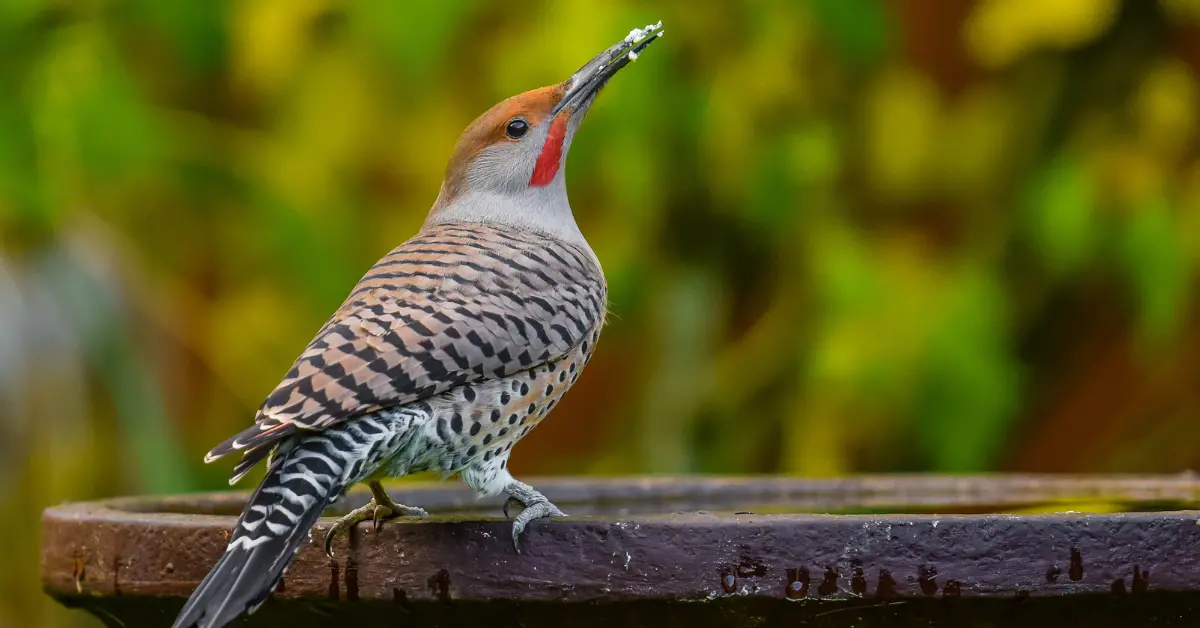
Feeders
Being a ground-forager, Northern Flickers aren’t the easiest birds to attract to your yard using a bird feeder alone.
If you do want to try, consider using a platform feeder, or feeders near perching branches. Add a variety of food sources, including suet and mealworms. Peanuts are also a good option – especially in winter when insect protein is harder to come by.
You may also find Flickers at the base of the feeder, foraging for any dropped seeds from other avian visitors.
As Northern Flickers feed heavily on ants and beetles, maintaining areas of natural lawn or leaving parts of your yard chemical-free will encourage the insects that flickers love to probe for.
Birdbaths
A birdbath, or any shallow water source, is another good way of attracting Northern Flickers to your yard.
Like other birds, Flickers frequent birdbaths to cool off in summer months, or to rid themselves of pesky parasites. They are particularly partial to birdbaths with drips or flowing water.
Nest Choice
For nesting, Northern Flickers, like all woodpeckers, need cavities. Their preferred nesting choice is dead or decaying trees in which they can bore into.
However, this isn’t always possible in the suburban yard. Instead, try mounting a large, deep nest box with an entrance hole around 2.5–3 inches in diameter.
Make sure you put the nest box up before the start of the breeding season. Depending on the region, this could be as early as late-winter (February) or as late as mid-summer (July).
Ensure there is a guard to keep predators from raiding eggs and young.
Final Thoughts
The Northern Flicker is a handsome woodpecker with a large range across North America.
There are two recognised subspecies: the red-shafted and yellow-shafted. The easiest way to distinguish the two is by looking at the colour of their flight-feather shaft or their malar stripe.
Unlike other woodpeckers, the Northern Flicker spends much of its time foraging for ants and other insects on the floor.
Combining food sources, water, and cavity opportunities makes your backyard an inviting habitat for these striking woodpeckers.

